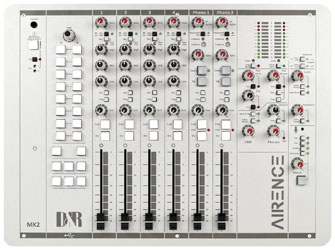For Source Material 9, we spoke at length to Duco de Rijk (founder of D&R Electronica BV) and discussed why analogue can sound better than digital when it comes to audio console design.
Transistors, Op Amps, and Tubes
D&R started long ago (1972) by making mixing consoles that were equipped with tubes.
One of the nicest features of these hot valves was that they sounded great. The sound was pleasantly warm, and overload was not an issue - with over 300 volts on the power rails and a bandwidth of up to 100kHz.
Next, we experimented with transistors, but could not get the same sound as we had achieved with tubes. Today, we are using, in most of our consoles, integrated circuits – commonly known as ICs.

There is a huge range of ICs on the market, and they all have their specific pros and cons. They are different from tubes and transistors, and sound different too. Some sound harsh, some are smoother. But, when connected to a high-end measuring system such as System-1, the specs are pretty much the same. So, what actually causes the differences that we are experiencing?
We human beings are capable of perceiving sound in extremely small details. We can even notice tiny amounts of distortion - in the order of 0.001% of the nominal signal level. We are highly sensitive to the odd harmonics (such as the 3rd, 5th, 7th, 9th 11th and so on) of the fundamental frequency.
A potential problem with ICs is that the crossover distortion at the output stage can produce not only dissonant harmonics, but also switching transients, especially when using a lower quality opamp. We have selected our opamps to behave in class A/B, leaning towards class A, resulting in a minimum of this distortion that we are so sensitive to.

A well-known designer in our industry once described the following test to me that anyone can repeat if interested; the results are very surprising. This test confirmed what we already knew from experience, but, up until this point, had not been able to prove why designing our consoles in this way improved the sound as dramatically as it does.
Wide-Bandwidth Design
Imagine listening to a sine wave of 1kHz. This should be a nice, pure round sound like the tone of an old Hammond organ.
Then switch this 1kHz sine wave to a square wave. Now you are listening to a sine wave plus lots of odd harmonics (such as 3rd, 5th, 7th and so on). Actually, on top of the 1kHz tone are, at a very low level, 3kHz - 5kHz - 7kHz - 11khz…etc.
The difference in perceived sound is quite clear to any listener, no mysteries here...

Canford are a leading distributor of D&R products and stock a wide range of products including broadcast consoles, illuminated signs, playout and automation software, and much more.